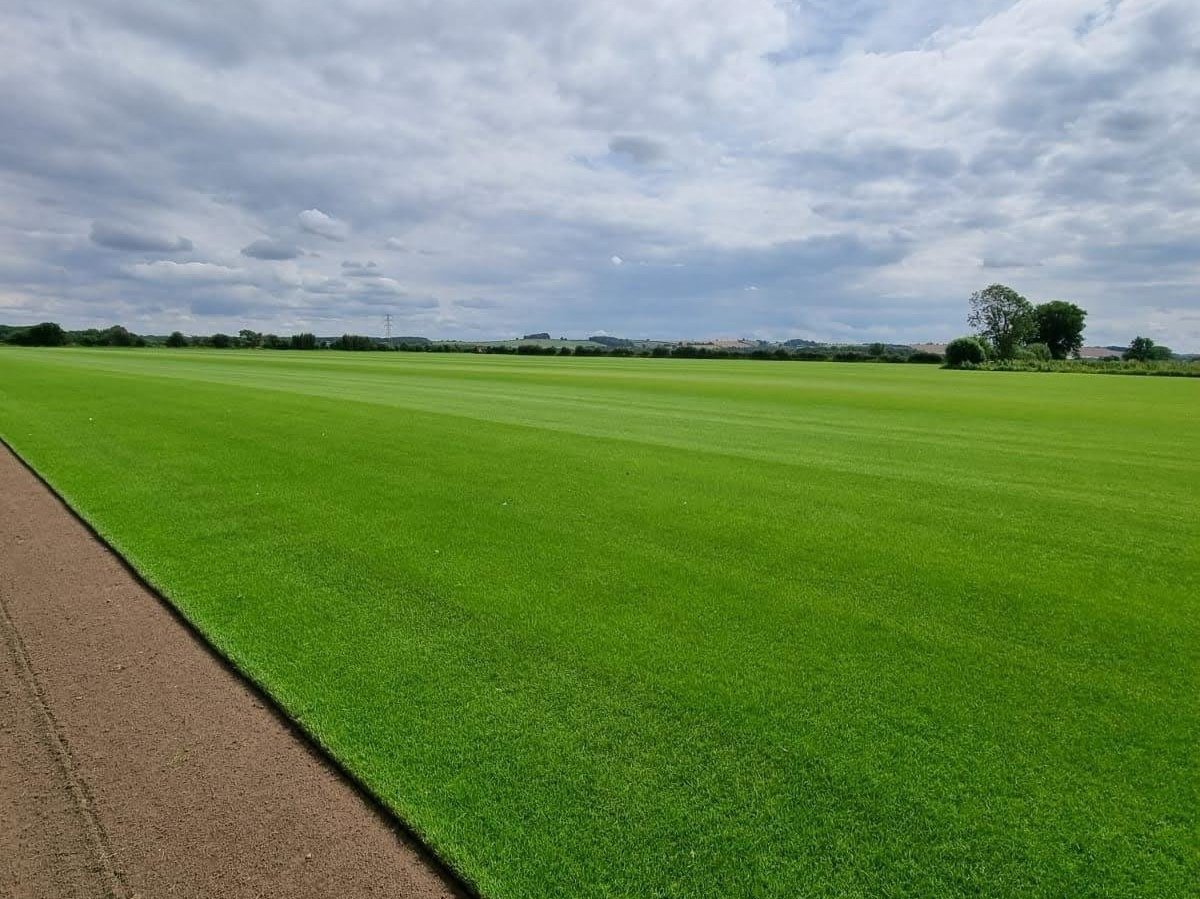Winter Turf Maintenance Tips for Landscapers
Winter brings unique challenges for turf care, with frost, freezing temperatures, and soil movement causing significant damage if left unaddressed. For landscapers in the UK, where unpredictable weather patterns are common, preparing turf for winter isn’t just about survival—it’s about ensuring landscapes thrive come spring.
In this blog, we’ll share actionable tips to help you protect turf during winter, from insulating roots to preventing frost heaving. Plus, we’ll highlight why using our Classic turf from Inturf is an excellent choice for maintaining stunning, resilient landscapes throughout the colder months.
1. Insulate turf roots with topsoil or lawn dressing
A light layer of high-quality topsoil or lawn dressing can act as a protective blanket for turf, shielding roots from extreme temperature fluctuations. By spreading topsoil or lawn dressing evenly across the turf surface (around 3–5mm), you:
Help retain soil warmth.
Reduce frost penetration that damages root systems.
Encourage microbial activity, which supports overall turf health.
Pro Tip: Apply the topsoil or lawn dressing before frost is expected, ensuring it has time to settle into the turf structure.
2. Prevent frost heaving
Frost heaving occurs when moisture in the soil freezes and expands, disrupting turf roots and leaving the surface uneven. To minimise frost heaving:
Ensure soil is well-drained to reduce waterlogging, which contributes to heaving.
Aerate compacted areas before the ground freezes to improve drainage and root strength.
Use mulch or organic matter to stabilise soil and protect turf crowns from frost exposure.
3. Choose resilient turf for Winter
For winter conditions, resilient turf makes all the difference. That’s why we recommend our Classic turf from Inturf, designed for durability and year-round performance. Suitable for commercial landscapes, domestic gardens, and sports pitches, Classic turf is:
Aesthetically Stunning: Tetraploid grass creates a dense, vibrant surface with great colour all year round.
Incredibly Resilient: Resistant to drought, wear, and disease, it stands up to severe weather conditions.
Environmentally Friendly: Absorbs more carbon dioxide, making it a sustainable choice for eco-conscious projects.
Low-Maintenance: Requires less upkeep than many turf options, saving time and costs during winter.
For winter, consider mowing your Classic turf to a height of 50mm to maximise its ability to handle adverse weather. Its shoot density and fescue blend ensure it remains strong and vibrant, even in challenging conditions.
4. Minimise traffic on frosted turf
Walking or working on frozen turf can crush delicate grass blades and damage roots, leaving long-lasting effects. To avoid this:
Limit foot traffic and equipment use on frosted lawns.
If access is necessary, use temporary paths or boards to distribute weight and reduce turf stress.
By protecting the turf surface during its most vulnerable period, you’ll prevent unnecessary damage and ensure a faster recovery in spring.
5. Plan for Spring recovery
Winter maintenance isn’t just about prevention — it’s about setting your turf up for robust growth in the months ahead. Some steps to consider:
Over-seed thin or patchy areas in late autumn to encourage new growth.
Continue applying topsoil or organic matter periodically to maintain soil health.
Evaluate and improve drainage systems to prevent waterlogging during winter rains.
Ready to prepare your turf for winter? Explore the benefits of our Classic turf from Inturf and contact our team today for expert advice and high-quality supplies. Let’s make winter maintenance easier together!
Images
Winter – Image by Pixabay
Topsoil – Image by Anna Tarazevich
Frosty grass - Image by Valeria from Pixabay
Frosty turf – Image by Johannes Plenio





